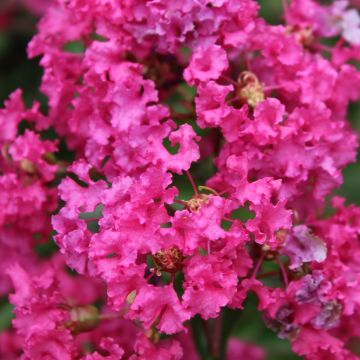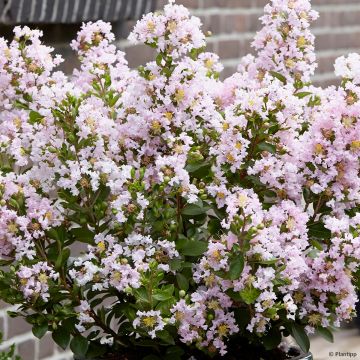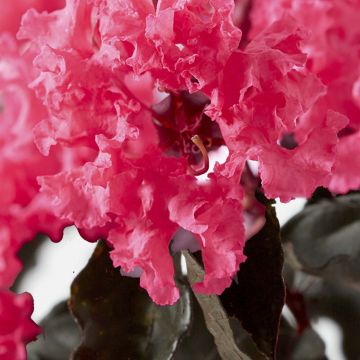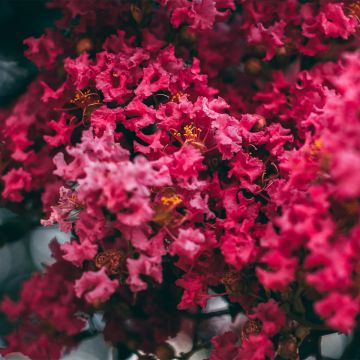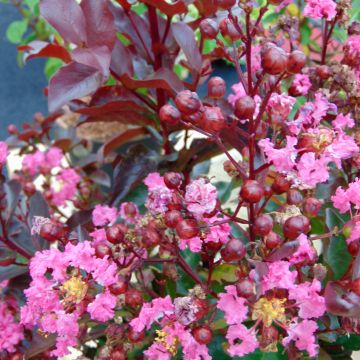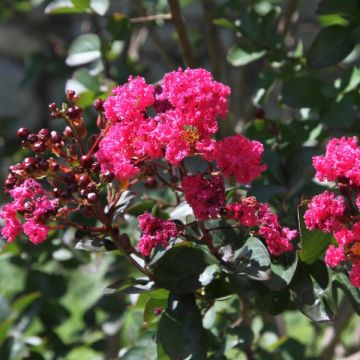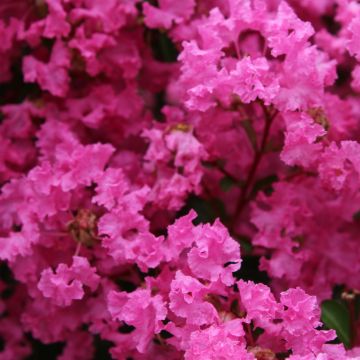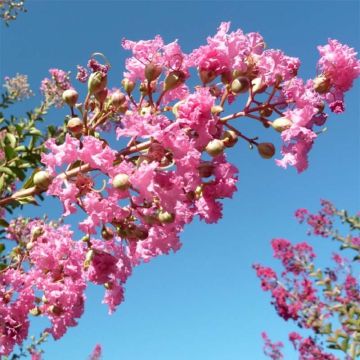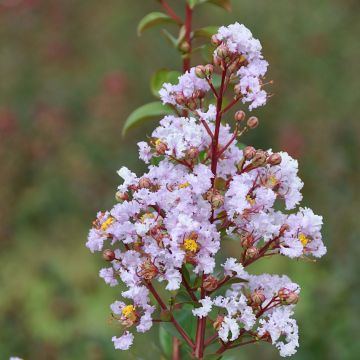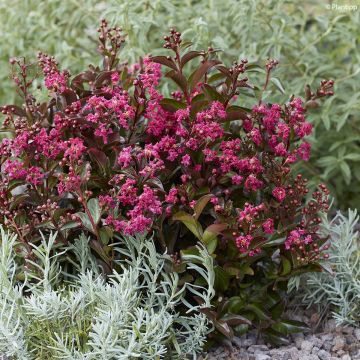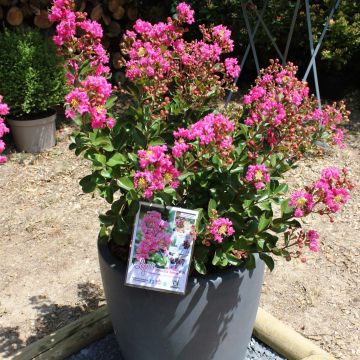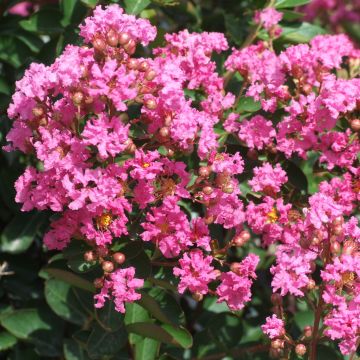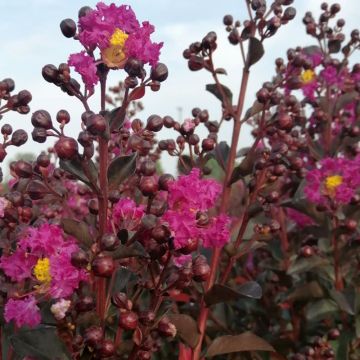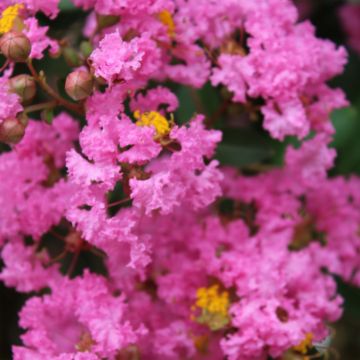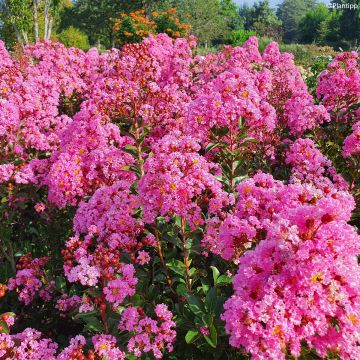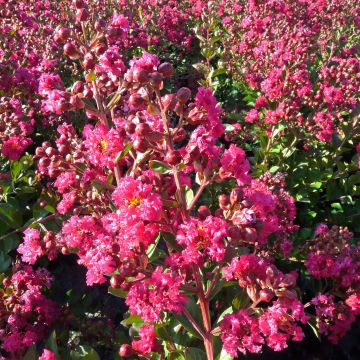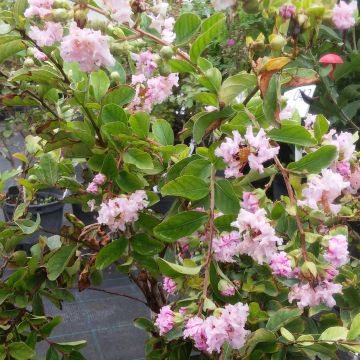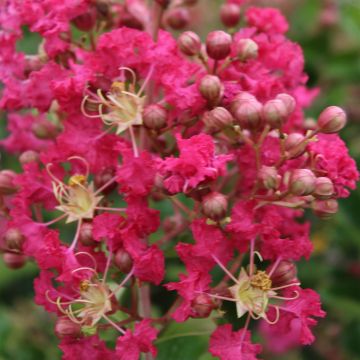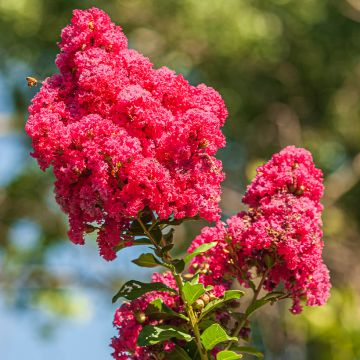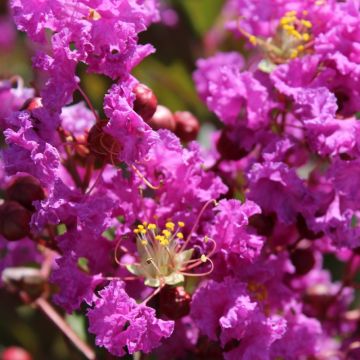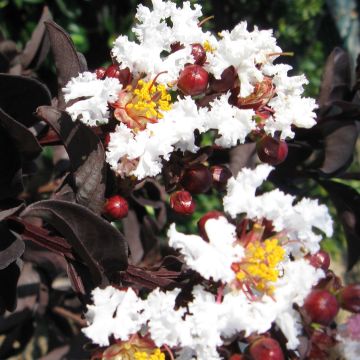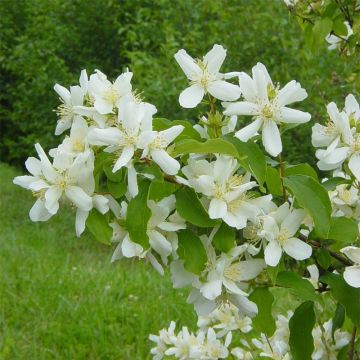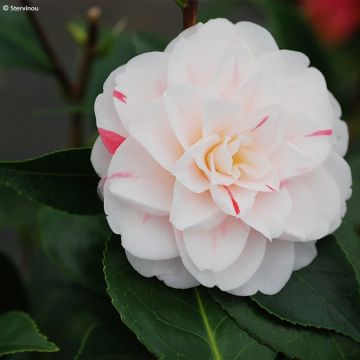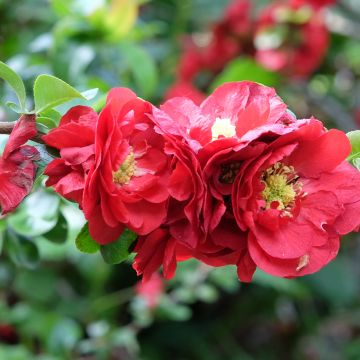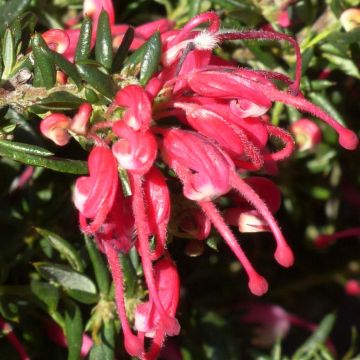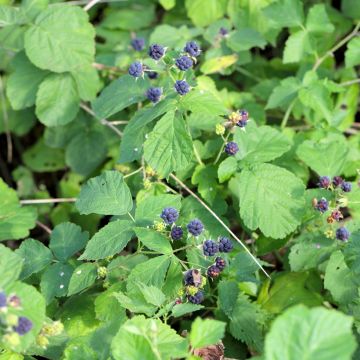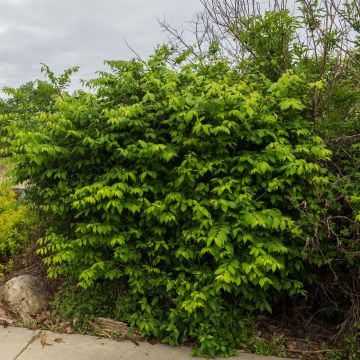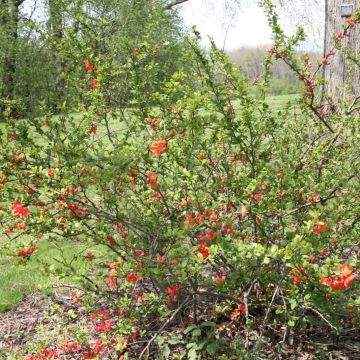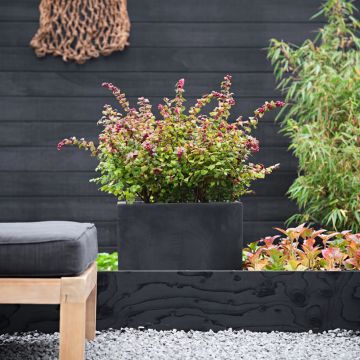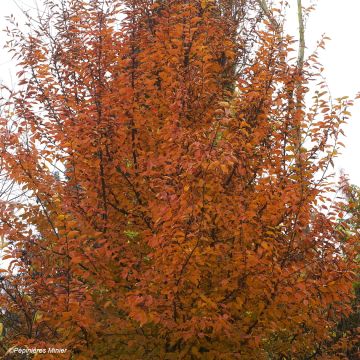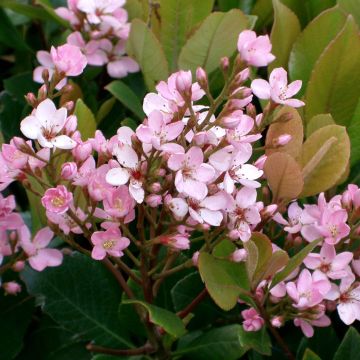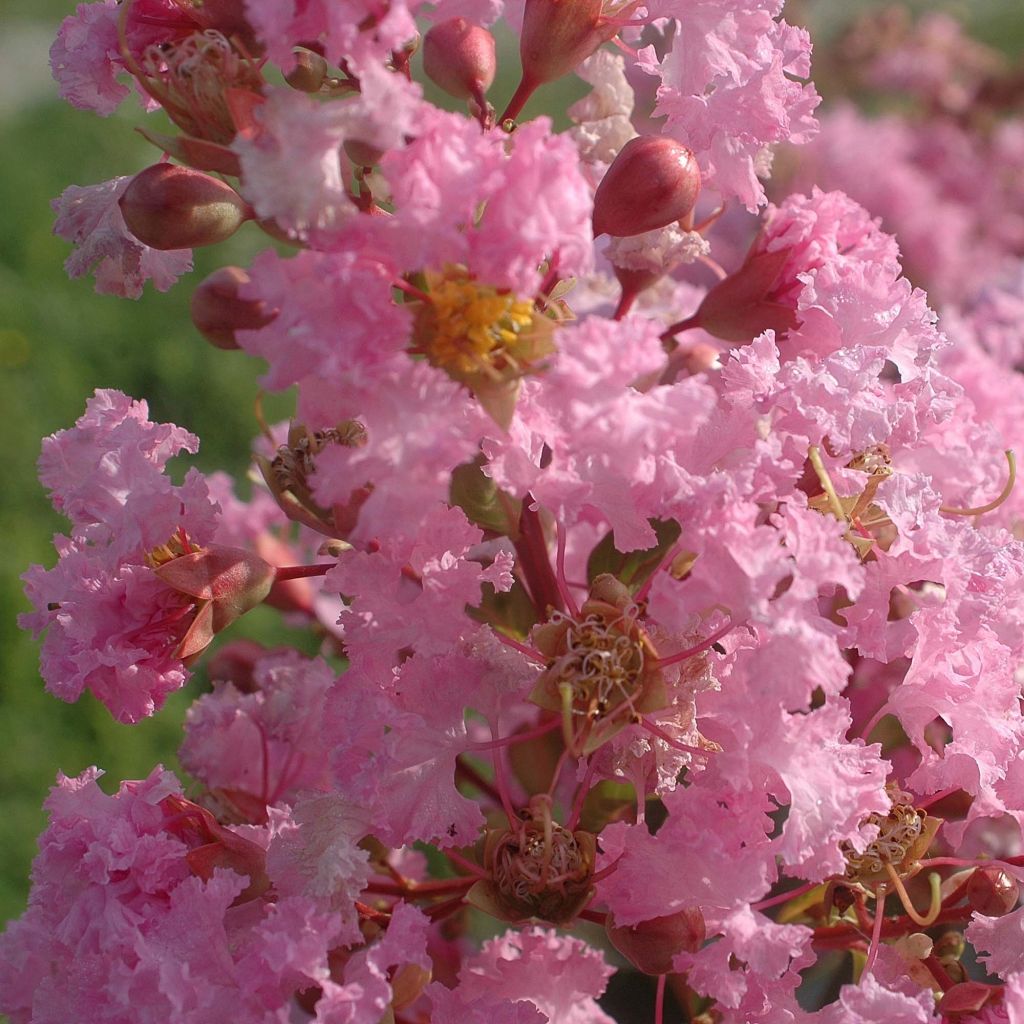

Lagerstroemia indica Tea Rose - Crape Myrtle
Lagerstroemia indica Tea Rose - Crape Myrtle
Lagerstroemia indica Rose Thé
Crape Myrtle, Crepe Myrtle, Indian Lilac
Why not try an alternative variety in stock?
View all →This plant carries a 24 months recovery warranty
More information
We guarantee the quality of our plants for a full growing cycle, and will replace at our expense any plant that fails to recover under normal climatic and planting conditions.
From €5.90 for pickup delivery and €6.90 for home delivery
Express home delivery from €8.90.
Delivery to Corse prohibited: UE law prohibits the import of this plant from mainland France to Corse as part of the fight against Xylella fastidiosa. Please accept our sincere apologies.
More information
Does this plant fit my garden?
Set up your Plantfit profile →
Description
The Lagerstroemia indica ‘Tea Rose’ is a medium-sized, resilient Indian Lilac, offering early and lavish summer flowering: its flower clusters are a very delicate pastel pink, enhanced by yellow stamens. This naturally ramified bush can become a small tree if patiently and meticulously pruned. It also charms with its matte green foliage that colours in the autumn and its decorative bark. Craving sun and warmth, this variety will flourish better warmer climates. Boasting multiple attributes, Indian Lilacs are among the most beautiful bushes for summer flowering. As such, they deserve a prime spot in the garden or on the terrace.
The Lagerstroemia indica ‘Tea Rose’ is a rather old cultivar, often overlooked in favour of modern cultivars despite its beautiful presence in the garden. It is a small tree or large bush from the Lythraceae family, originating from China. It has a bushy and ramified habit, with a rounded crown. It will reach on average of 3 m (9 ft 10 in) in height at ripeness, with a span of 2 m. Its growth is quite fast. It needs warmth to flower and often chooses the beginning of July to start its flowering, which will continue until October. The flowers are characterised by thin pedicels each carrying five undulate-edged petals that make up this flower. The flowers, whose texture is reminiscent of crepe, are gathered in large, dense panicles at the ends of the year's branches. The buds of the 'Tea Rose' are pink, and then they bloom into a bright and soft pale pink. The deciduous foliage, leathery, is born red, then becomes shiny green. It is made up of small ovate leaves, which often take on pretty yellow, orange or red hues in the autumn, before falling. Lastly, and to end on a beautiful note, its bark is magnificent on old specimens: smooth, beige, striated with reddish-brown, it peels off in beautifully coloured plates (cinnamon, faded red, old pink, cream).
Indian Lilacs bring glory to the gardens of the South West, and prefer humid and warm climates. It is in isolation, near the house, that you can fully enjoy this plant's generosity. It will look good in a bush bed, a flowering hedge, or emerging from a mound of perennials. Compose a bed like a bouquet, with Artemisia Powis Castle, Campanula pyramidalis, Salvia sclarea, Aster laevis. In the autumn, it accompanies the aster, which is as colourful as itself. In a large pot on the terrace, it steals the show when the summer flowerings fade. We have simply imagined a tricolour plant tapestry as a ground cover to highlight the Summer Lilac 'Tea Rose’. A cradle of Swany roses and Valerie Finnis wormwood, punctuated with small tufts of lavender and red carnations will dress the base of its trunk, underline its bark and accompany its sparkling flowering.
The Indian Lilac also bears many other evocative and charming names: muslin flower, crepe myrtle, lagerose, Chinese crepe myrtle, crepe paper flower.
NB: Karl Von Linne named this tree to honour his friend Magnus Von Lagerstroem (1696 – 1759), who had sent it to him from India for identification. Originally, this tree was used to decorate Chinese temples. We would like to point out that this tree produces fruits that have a narcotic action if ingested.
Report an error about the product description
Lagerstroemia indica Tea Rose - Crape Myrtle in pictures
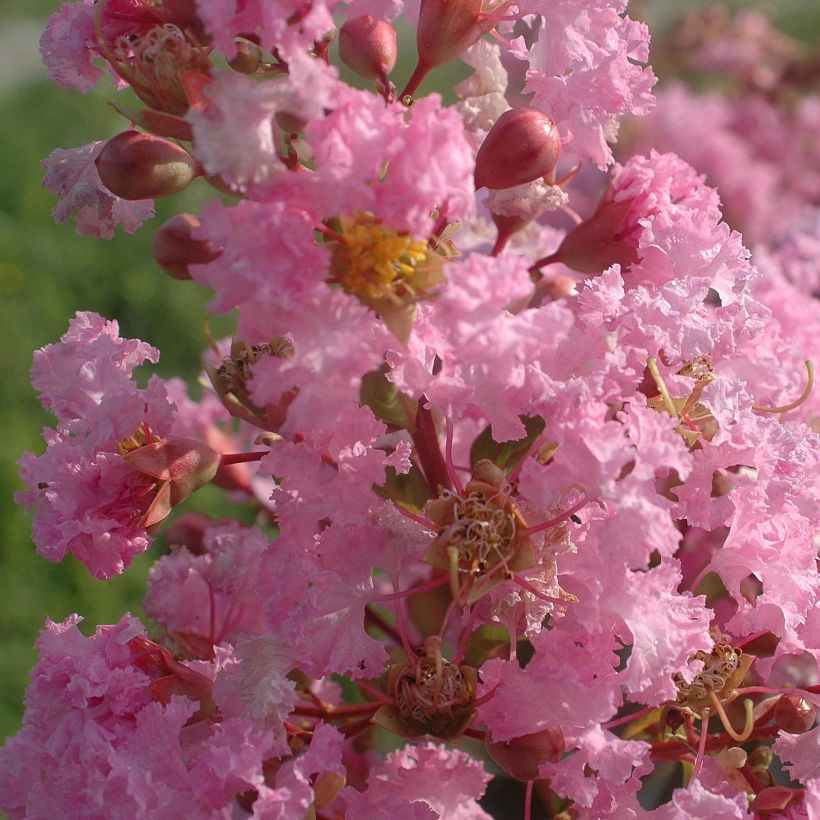

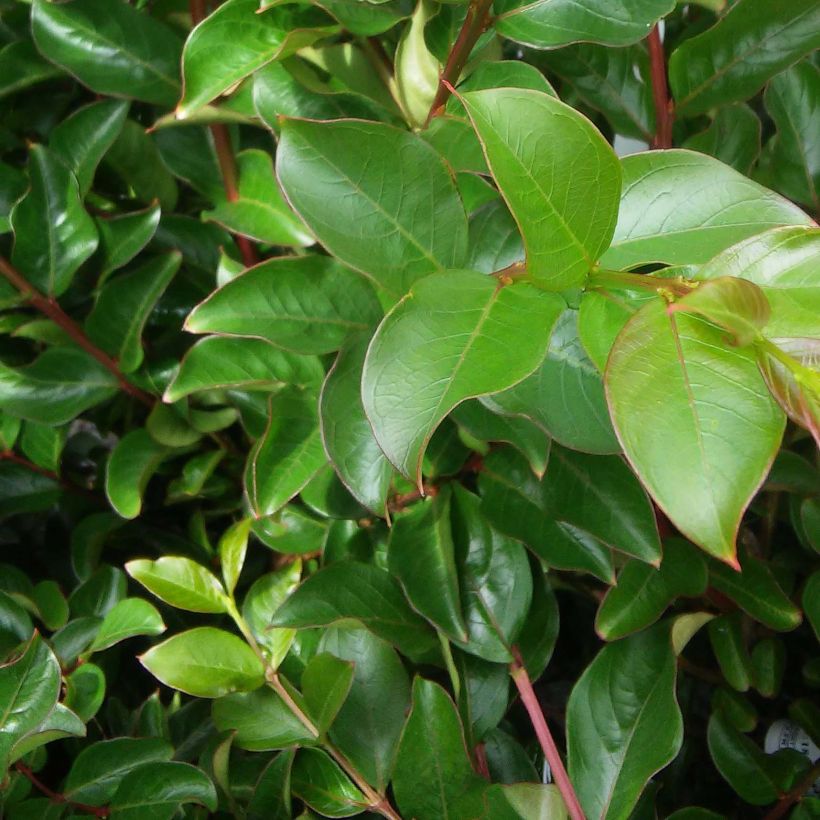

Plant habit
Flowering
Foliage
Botanical data
Lagerstroemia
indica
Rose Thé
Lythraceae
Crape Myrtle, Crepe Myrtle, Indian Lilac
Cultivar or hybrid
Other Lagerstroemia - Crape Myrtle
Planting and care
We advise you to plant the Lagerstroemia indica 'Rose Tea' in the spring, when frosts are no longer to be feared, in a very sunny and sheltered, warm position, in a rich, fresh, well-drained soil, and if possible non-limestone (or at least without excess of limestone). It will appreciate a compost input and a thick layer of dead leaves, especially during the first two winters in colder regions. It is necessary to prune the floriferous branches very short in February-March, leaving only 4 to 6 buds to balance its branches and stimulate the growth of future flower-bearing branches. If necessary, remove the weak twigs and poorly positioned branches. In a hot and dry situation, it is not uncommon for the Lagerstroemia to be sensitive to powdery mildew; water regularly in hot and dry climates. Propagation is done by using cuttings of young stems or roots, the latter succeeding remarkably.
Planting period
Intended location
Care
This item has not been reviewed yet - be the first to leave a review about it.
Hedge shrubs
Haven't found what you were looking for?
Hardiness is the lowest winter temperature a plant can endure without suffering serious damage or even dying. However, hardiness is affected by location (a sheltered area, such as a patio), protection (winter cover) and soil type (hardiness is improved by well-drained soil).

Photo Sharing Terms & Conditions
In order to encourage gardeners to interact and share their experiences, Promesse de fleurs offers various media enabling content to be uploaded onto its Site - in particular via the ‘Photo sharing’ module.
The User agrees to refrain from:
- Posting any content that is illegal, prejudicial, insulting, racist, inciteful to hatred, revisionist, contrary to public decency, that infringes on privacy or on the privacy rights of third parties, in particular the publicity rights of persons and goods, intellectual property rights, or the right to privacy.
- Submitting content on behalf of a third party;
- Impersonate the identity of a third party and/or publish any personal information about a third party;
In general, the User undertakes to refrain from any unethical behaviour.
All Content (in particular text, comments, files, images, photos, videos, creative works, etc.), which may be subject to property or intellectual property rights, image or other private rights, shall remain the property of the User, subject to the limited rights granted by the terms of the licence granted by Promesse de fleurs as stated below. Users are at liberty to publish or not to publish such Content on the Site, notably via the ‘Photo Sharing’ facility, and accept that this Content shall be made public and freely accessible, notably on the Internet.
Users further acknowledge, undertake to have ,and guarantee that they hold all necessary rights and permissions to publish such material on the Site, in particular with regard to the legislation in force pertaining to any privacy, property, intellectual property, image, or contractual rights, or rights of any other nature. By publishing such Content on the Site, Users acknowledge accepting full liability as publishers of the Content within the meaning of the law, and grant Promesse de fleurs, free of charge, an inclusive, worldwide licence for the said Content for the entire duration of its publication, including all reproduction, representation, up/downloading, displaying, performing, transmission, and storage rights.
Users also grant permission for their name to be linked to the Content and accept that this link may not always be made available.
By engaging in posting material, Users consent to their Content becoming automatically accessible on the Internet, in particular on other sites and/or blogs and/or web pages of the Promesse de fleurs site, including in particular social pages and the Promesse de fleurs catalogue.
Users may secure the removal of entrusted content free of charge by issuing a simple request via our contact form.
The flowering period indicated on our website applies to countries and regions located in USDA zone 8 (France, the United Kingdom, Ireland, the Netherlands, etc.)
It will vary according to where you live:
- In zones 9 to 10 (Italy, Spain, Greece, etc.), flowering will occur about 2 to 4 weeks earlier.
- In zones 6 to 7 (Germany, Poland, Slovenia, and lower mountainous regions), flowering will be delayed by 2 to 3 weeks.
- In zone 5 (Central Europe, Scandinavia), blooming will be delayed by 3 to 5 weeks.
In temperate climates, pruning of spring-flowering shrubs (forsythia, spireas, etc.) should be done just after flowering.
Pruning of summer-flowering shrubs (Indian Lilac, Perovskia, etc.) can be done in winter or spring.
In cold regions as well as with frost-sensitive plants, avoid pruning too early when severe frosts may still occur.
The planting period indicated on our website applies to countries and regions located in USDA zone 8 (France, United Kingdom, Ireland, Netherlands).
It will vary according to where you live:
- In Mediterranean zones (Marseille, Madrid, Milan, etc.), autumn and winter are the best planting periods.
- In continental zones (Strasbourg, Munich, Vienna, etc.), delay planting by 2 to 3 weeks in spring and bring it forward by 2 to 4 weeks in autumn.
- In mountainous regions (the Alps, Pyrenees, Carpathians, etc.), it is best to plant in late spring (May-June) or late summer (August-September).
The harvesting period indicated on our website applies to countries and regions in USDA zone 8 (France, England, Ireland, the Netherlands).
In colder areas (Scandinavia, Poland, Austria...) fruit and vegetable harvests are likely to be delayed by 3-4 weeks.
In warmer areas (Italy, Spain, Greece, etc.), harvesting will probably take place earlier, depending on weather conditions.
The sowing periods indicated on our website apply to countries and regions within USDA Zone 8 (France, UK, Ireland, Netherlands).
In colder areas (Scandinavia, Poland, Austria...), delay any outdoor sowing by 3-4 weeks, or sow under glass.
In warmer climes (Italy, Spain, Greece, etc.), bring outdoor sowing forward by a few weeks.

































